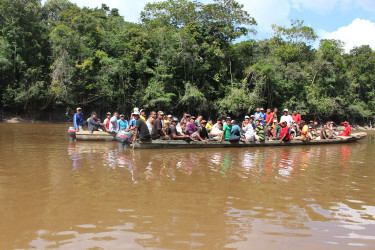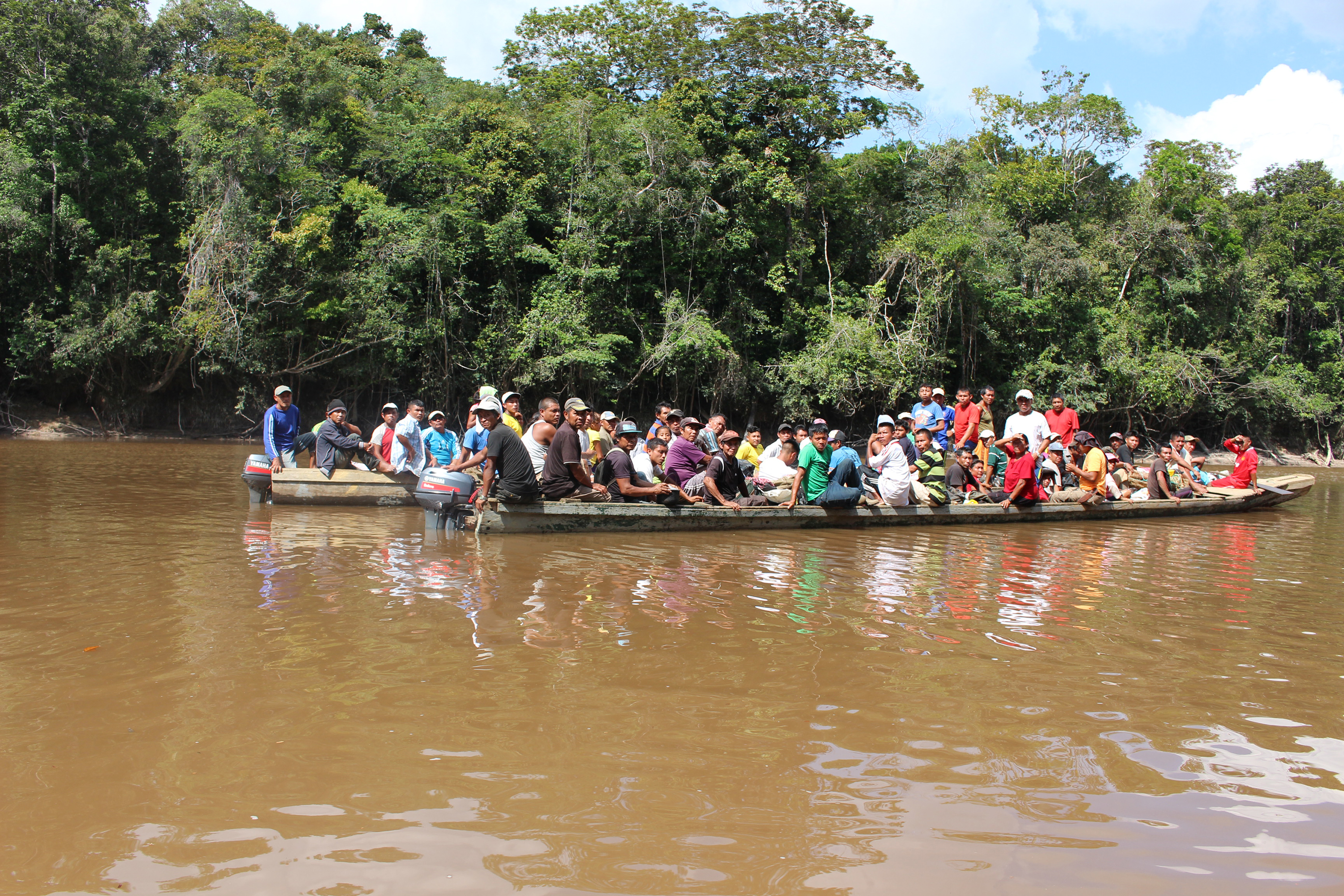“Is tiger! Is tiger!” the man shouted, and, despite admonitions to sit, I rose up in the huge canoe again, quivering with excitement trying to get a shot of the “tiger.”
The animal, its brown head almost camouflaged by the brown waters of the Mazaruni River, finally reached shore and with one quick bound, disappeared into the thick jungle. “Is tiger,” the man said, his disappointment evident, as initially, they thought it was a deer.

I barely got a shot of the animal, which to me seemed to be either a jaguarundi or a cougar. It was lucky that it wasn’t a deer or else it would have been lunch.
The two-hour long canoe ride was otherwise uneventful and I had been deep in thought as we moved down the polluted Mazaruni.
This was my second visit to Jawalla, an indigenous village populated by people of the Akawaio nation, deep in the jungle of the Upper Mazaruni and accessible only by boat. To get there, I flew from Ogle to Kamarang, then up the Mazaruni River in a long canoe cut from a single huge tree. It was powered by an engine. It was named ‘Luckey Dollar’ with an ‘e’ but we nicknamed it the Ark because it was filled with people and slow. We took over three hours to get to Jawalla under a blazing sun. In a speedboat, the trip would normally take just about an hour.
I had the first indication that the trip was going to be different when we met another enormous canoe, moving even slower than we were, heading downriver. It was filled with dozens of men, women and even children.
The people in both canoes hailed each other and before I knew it, the canoes were in the middle of the river, side-by-side, while the people hugged and shouted news. It was all about Venezuela and guns. News, letters and newspapers were exchanged and the people quickly pounced on the newspapers eager to read about what was happening.
They were also quick to share their tuma pot, a traditional dish, where meat is cooked in cassava broth with lots and lots of pepper.

